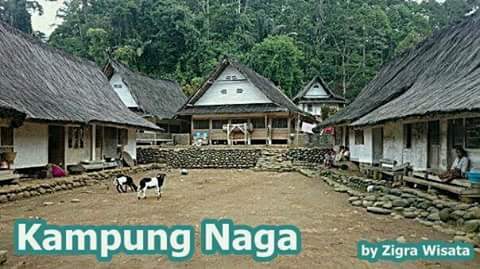Kampung Naga is a hamlet located in the area of Neglasari Village, Salawu District, Tasikmalaya Regency, West Java Province, Indonesia.
Kampung Naga is a village which is inhabited by a community in a very strong tradition of holding the remainder ancestors. The differences are visible when compared with other communities outside Kampung Naga. The community are living in the framework of an atmosphere in a traditional simplicity and environmental wisdom.
Kampung Naga is located not far from the main road that connects with the city of Garut Tasikmalaya. Villages are located in a fertile valley, with the boundaries, in the West Village by Naga forest. The forest is sacred because it is located in the ancestral cemetery. In the south is the rice fields, and in the north and east are surrounded by river Ciwulan, which the source of water comes from Mount Cikuray in Garut. The distance from the town of Tasikmalaya to Kampung Naga is approximately 30 kilometers, while the distance from the city of Garut is 26 kilometers. To reach Kampung Naga from Garut, Tasikmalaya, people must climb down the ladder in the wall (Sunda: sengked) to the bank of the river Ciwulan with the slope about 45 degrees with a distance of approximately 500 meters. Then through the paths into Kampung Naga. The settlement is easier to visit than the most ancient Sundanese village in Baduy.[1]
According to the data from Neglasari village, the surface soil of Kampung Naga hills with those used for land productivity can be fertile. Area of land in Kampung Naga is one of half a hectare, mostly used for housing, yards, ponds, and the rest is used for agriculture rice harvested twice a year.
The preservation of the village has been supported by national government beginning during the Suharto presidency, and it has been described as part of the "public face of regulation in Suharto's Indonesia".[2] The government provided concrete steps which connected the village to the outside world and battery powered radios as gifts for the village; tour guides were government-trained and reiterated the Naga people's desire for: self-sufficiency; the continuation of their traditions; and their desire to be model citizens.[3]
Source: Wikipedia



No comments:
Post a Comment